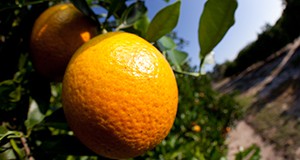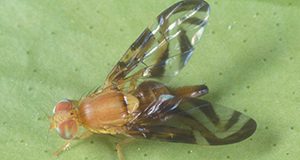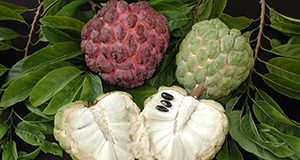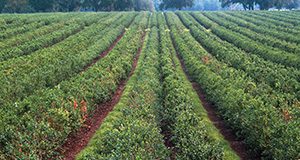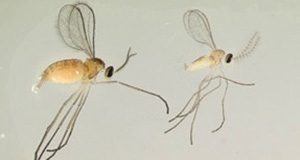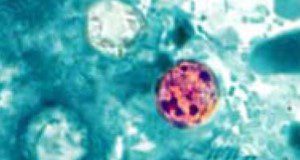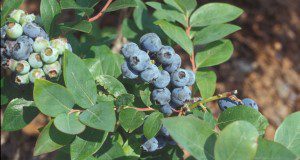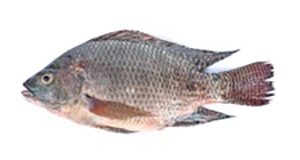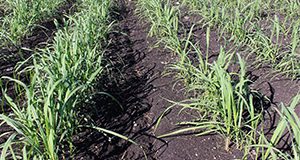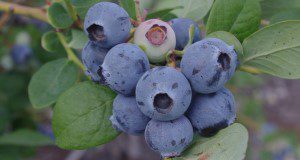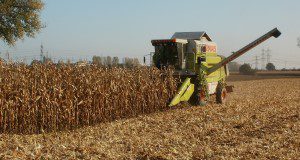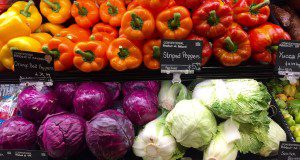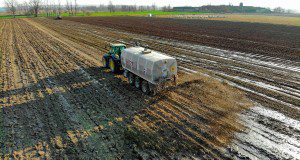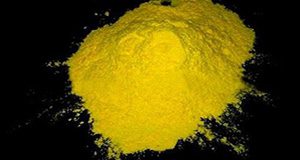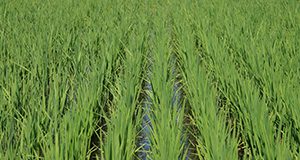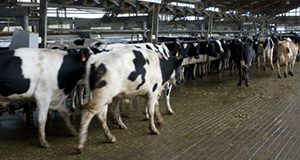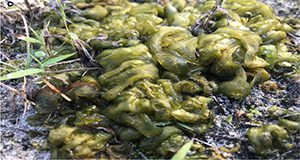This 4-page fact sheet written by Ariel Singerman and published by the UF/IFAS Food and Resource Economics Department presents a summary of the 2017/18 costs of production for processed oranges grown in southwest Florida. Typical users of these estimates include growers and consultants, who use them as a benchmark; property appraisers, who use them to compute the taxes for property owners; and researchers, who use the estimates to evaluate the economic feasibility of potential new technologies.
http://edis.ifas.ufl.edu/fe1056
Category: Agriculture
Caribbean Fruit Fly Management in Florida Peaches
The Caribbean fruit fly, Anastrepha suspensa, is a member of the fly family Tephritidae, which contains some of the most destructive fruit pests in the world. This 4-page fact sheet written by Amanda Coleen Hodges and Cory Penca and published by the UF/IFAS Department of Entomology and Nematology provides information about the biology and management of the Caribbean fruit fly.
http://edis.ifas.ufl.edu/in1242
Cost Estimates of Producing Sugar Apple (Annona squamosa L.) in South Florida
Because of the growing interest in alternative tropical fruit crops to diversify farm income, this 6-page fact sheet written by Fredy H. Ballen, Aditya Singh, Edward Evans, and Jonathan Crane and published by the UF/IFAS Food and Resource Economics Department offers an estimate of costs and returns associated with operating an established sugar apple orchard in south Florida.
http://edis.ifas.ufl.edu/fe1053
Crop Insurance Policies Available to Blueberry Growers in Florida
The main source of risk in crop production stems from the unpredictable nature of weather, pests, diseases, etc. By purchasing crop insurance, the farmer transfers part of the risk to an insurance company in exchange for paying a premium (which is the cost of purchasing crop insurance). In this 6-page fact sheet published by the UF/IFAS Food and Resource Economics Department, authors Robert Ranieri and Ariel Singerman describe and provide examples for the two main crop insurance policies available for blueberry farmers in Florida.
http://edis.ifas.ufl.edu/fe1054
Blueberry Gall Midge on Southern Highbush Blueberry in Florida
Blueberry gall midge is a small fly native to North America that feeds on blueberries and cranberries. It can be found throughout the United States, including Florida, where its larvae feed on southern highbush blueberry and rabbiteye floral and vegetative buds. Reports of blueberry gall midge damage on southern highbush blueberry in Florida have become more common in recent years, in some cases significantly impacting yield where there was severe feeding damage to floral buds. This 3-page fact sheet written by Oscar Liburd and Doug Phillips and published by the UF/IFAS Department of Entomology and Nematology will inform growers how to scout for, identify, and control blueberry gall midge.
http://edis.ifas.ufl.edu/in1239
Microworm Culture for Use in Freshwater Ornamental Aquaculture
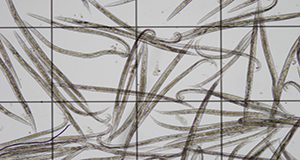
A small nematode worm commonly referred to as a “microworm” has been a staple live feed used in the ornamental aquaculture industry for over 50 years. These worms are small enough to be ingested by the larvae of many commonly cultured ornamental species, and their production methods are simple and reliable. Microworms have the potential to provide appropriate nutrition in a live feed organism that is cultured entirely in-house and involves less labor and cost than newly hatched Artemia. In this 4-page fact sheet published by the UF/IFAS School of Forest Resources and Conservation, Program in Fisheries and Aquatic Sciences, authors Shane W. Ramee, Taylor N. Lipscomb, and Matthew A. DiMaggio discuss the biology, environmental requirements, and culture techniques for microworms and explain their importance for the larval culture of freshwater fish species.
http://edis.ifas.ufl.edu/fa214
Preventing Foodborne Illness: Cyclosporiasis
Cyclosporiasis is an intestinal illness caused by the microscopic parasite Cyclospora cayetanensis. People can become infected with Cyclospora by consuming food or water contaminated with the parasite. People living or traveling in countries where cyclosporiasis is endemic may be at increased risk for infection. This 6-page publication is part of the Preventing Foodborne Illness series and describes symptoms and strategies for cyclosporiasis prevention for farmers, restaurants and retailers, and consumers. This major revision was written by Christopher R. Pabst, Jaysankar De, Renée Goodrich-Schneider, and Keith R. Schneider and published by the UF/IFAS Food Science and Human Nutrition Department.
http://edis.ifas.ufl.edu/fs130
Food Safety on the Farm: Good Agricultural Practices and Good Handling Practices: Transportation
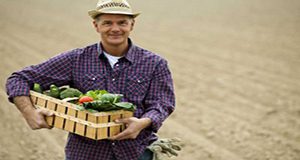
Good agricultural practices (GAPs) and good handling practices (GHPs) encompass the general procedures growers, packers, and processors of fresh fruits and vegetables should follow to ensure the safety of their product. GAPs usually address preharvest practices (i.e., in the field), while GHPs cover postharvest practices, including packing and shipping. This 3-page fact sheet covers the GAPs of transporting crops. This major revision is a part of the Food Safety on the Farm series and was written by Christopher R. Pabst, Jaysankar De, Alina Balaguero, Jessica Lepper, Renée Goodrich-Schneider, and Keith R. Schneider and published by the UF/IFAS Food Science and Human Nutrition Department.
http://edis.ifas.ufl.edu/fs151
Food Safety on the Farm: Good Agricultural Practices and Good Handling Practices: Water
Good agricultural practices (GAPs) and good handling practices (GHPs) encompass the general procedures growers, packers, and processors of fresh fruits and vegetables should follow to ensure the safety of their product. GAPs usually address preharvest practices (i.e., in the field), while GHPs cover postharvest practices, including packing and shipping. This 7-page fact sheet covers GAPs and GHPs relating to water use. This major revision is a part of the Food Safety on the Farm series and was written by Jaysankar De, Christopher R. Pabst, Jessica Lepper, Renée Goodrich-Schneider, and Keith R. Schneider and published by the UF/IFAS Food Science and Human Nutrition Department.
http://edis.ifas.ufl.edu/fs136
Botryosphaeria Stem Blight on Southern Highbush Blueberry in Florida
Botryosphaeria stem blight is the most common and damaging fungal vascular disease on southern highbush blueberry in the southern United States, causing stem and cane dieback and reductions in yield. Advanced stages of this disease may cause premature plant death, which results in significant replanting costs for growers. Biotic or abiotic stresses from a variety of sources can make plants more susceptible to infection by stem blight pathogens. This new 5-page publication is intended for Florida blueberry growers to use as a guide in the identification and management of Botryosphaeria stem blight on southern highbush blueberry. Written by Norma C. Flor, Douglas A. Phillips, and Philip F. Harmon and published by the UF/IFAS Plant Pathology Department.
http://edis.ifas.ufl.edu/pp347
Tilapia Lake Virus (TiLV): a Globally Emerging Threat to Tilapia Aquaculture
Tilapia lake virus is a globally emerging virus responsible for episodes of mass mortality in cultured and/or feral tilapia (Oreochromis spp. and hybrids) in Asia, Africa, Central America, and South America. Since 2014, there have been global reports of TiLV disease resulting in 10% to 90% mortality in tilapia fry, juveniles, and adults causing significant economic losses. Currently, the disease has been confirmed in Colombia, Ecuador, Egypt, India, Indonesia, Israel, Malaysia, Mexico, Philippines, Peru, Tanzania, and Thailand. TiLV has not yet been found in the USA or Canada, but it has most recently been reported in 20 aquaculture production facilities across six Mexican states (Chiapas, Jalisco, Michoacán, Sinaloa, Tabasco and Veracruz). This 7-page fact sheet written by Lowia Al-Hussinee, Kuttichantran Subramaniam, Win Surachetpong, Vsevolod Popov, Kathleen Hartman, Katharine Starzel, Roy Yanong, Craig Watson, Hugh Ferguson, Salvatore Frasca Jr., and Thomas Waltzek and published by the UF/IFAS School of Forest Resources and Conservation, Program in Fisheries and Aquatic Sciences describes this important emerging disease and explains how to prevent outbreaks and what to do if you suspect TiLV in an aquaculture facility or in the wild.
http://edis.ifas.ufl.edu/fa213
Sugarcane Cultivar Descriptive Fact Sheet: CPCL 02-0926 and CP 05-1526
This new 5-page fact sheet provides basic information as well as yield and disease information for CPCL 02-0926 and CP 05-1526 to assist growers in selection and management of these cultivars. Written by Hardev Sandhu and Wayne Davidson, and published by the UF/IFAS Agronomy Department, February 2019.
http://edis.ifas.ufl.edu/sc105
Southern Highbush Blueberry Cultivars from the University of Florida
Southern highbush blueberries combine the fruit quality and productivity of highbush blueberries with the low chilling requirement necessary to produce a crop in the Florida climate. Written by J. G. Williamson, D. A. Phillips, P. M. Lyrene, and P. R. Munoz and published by the UF/IFAS Horticultural Sciences Department, this 13-page major revision describes current and historical southern highbush blueberry cultivars released by the University of Florida.
http://edis.ifas.ufl.edu/hs1245
Food Safety on the Farm: Good Agricultural Practices and Good Handling Practices: Field Sanitation
Good Agricultural Practices (GAPs) and Good Handling Practices (GHPs) encompass the general procedures that growers, packers, and processors of fresh fruits and vegetables should follow to ensure the safety of their product. GAPs usually deal with preharvest practices (i.e., in the field), while GHPs cover postharvest practices, including packing and shipping. This 5-page fact sheet covers harvest practices associated with sanitation in the field, including basic principles for microbial food safety and control of potential hazards. This major revision is a part of the Food Safety on the Farm series and was written by Jessica Lepper, Jaysankar De, Christopher Pabst, Renée Goodrich-Schneider, and Keith Schneider and published by the UF/IFAS Food Science and Human Nutrition Department.
http://edis.ifas.ufl.edu/fs160
Food Safety on the Farm: Good Agricultural Practices and Good Handling Practices: Traceback
Good Agricultural Practices (GAP) and Good Handling Practices (GHP) are voluntary audits that verify fruits and vegetables are produced, packed, handled, and stored as safely as possible to keep the risks of microbial food safety hazards at the minimal level. Good Agricultural Practices usually deal with preharvest practices (i.e., in the field), while GHPs cover postharvest practices, including packing and shipping. This 3-page fact sheet in the Food Safety on the Farm series covers GAPs and GHPs relating to traceback, or the ability to track food items, such as fresh produce, back to their source. This major revision was written by Jaysankar De, Christopher R. Pabst, Alexandra S. Chang, Renée M. Goodrich-Schneider, and Keith R. Schneider and published by the UF/IFAS Food Science and Human Nutrition Department.
http://edis.ifas.ufl.edu/fs152
Food Safety on the Farm: Good Agricultural Practices and Good Handling Practices: Manure and Municipal Biosolids
Good Agricultural Practices (GAPs) and Good Handling Practices (GHPs) encompass the general procedures growers, packers, and processors of fresh fruits and vegetables should follow to ensure the safety of their product. GAPs usually deal with pre-harvest practices (i.e., in the field), while GHPs tend to cover post-harvest practices, including packing and shipping. This 5-page entry in the Food Safety on the Farm series focuses on Good Agricultural Practices, including pathogen reduction and handling and application, to control potential hazards when working with manure and biosolids. This major revision was written by Jaysankar De, Christopher R. Pabst, Jessica Lepper, Renée M. Goodrich-Schneider, and Keith R. Schneider and published by the UF/IFAS Food Science and Human Nutrition Department.
http://edis.ifas.ufl.edu/fs150
Oxytetracycline hydrochloride (OTC-HCl) application for control of palm phytoplasmas
Phytoplasma diseases of palms are a major threat to the Florida nursery and landscaping industries. Historically, lethal yellowing has killed millions of coconut palms throughout the Caribbean and has been causing decline of over 30 species of palm in Florida since it was introduced to the state in the first half of the 20th century. In 2006, lethal bronzing disease was discovered on the west coast of Florida near Tampa. Currently, the only two management options available for control of phytoplasmas is an aggressive sampling strategy followed by consistent tree removal and injections of oxytetracycline hydrochloride, or OTC. This 2-page fact sheet written by Brian W. Bahder and Ericka E. Helmick and published by the UF/IFAS Entomology and Nematology Department seeks to provide a source of information and instruction on the injection of OTC into palm trunks.
http://edis.ifas.ufl.edu/in1240
Weed Management in Rice
Successful weed control is essential for economical rice production in Florida. This 6-page document discusses field sanitation and tillage, water management, and herbicides. Written by D. C. Odero and M. VanWeelden, and published by the UF/IFAS Agronomy Department, revised August 2018.
http://edis.ifas.ufl.edu/wg001
The Consequence of Postpartum Uterine Disease on Dairy Cow Fertility
This new 4-page document discusses the reproductive consequences of uterine disease in the dairy cow, potential mechanisms, and current treatments. Written by Rachel L. Piersanti and John J. Bromfield, and published by the UF/IFAS Department of Animal Sciences, March 2019.
http://edis.ifas.ufl.edu/an354
Biology and Management of Nostoc (Cyanobacteria) in Nurseries and Greenhouses
This new 4-page document provides an overview of the biology and ecology of Nostoc-like cyanobacteria (blue-green algae) in humid soils and discusses cultural, physical, and chemical methods to manage this weed in nursery environments. Written by H. Dail Laughinghouse IV, David E. Berthold, Chris Marble, and Debalina Saha, and published by the UF/IFAS Agronomy Department, February 2019.
http://edis.ifas.ufl.edu/ag430
